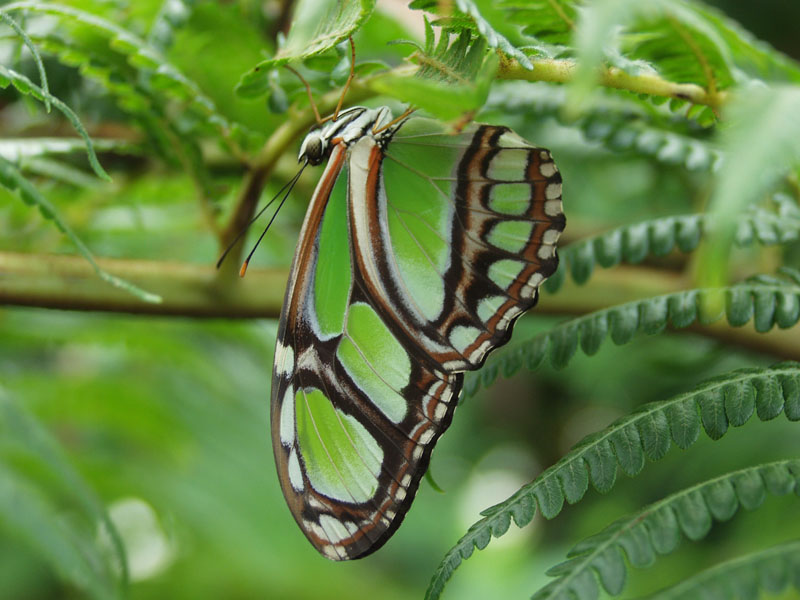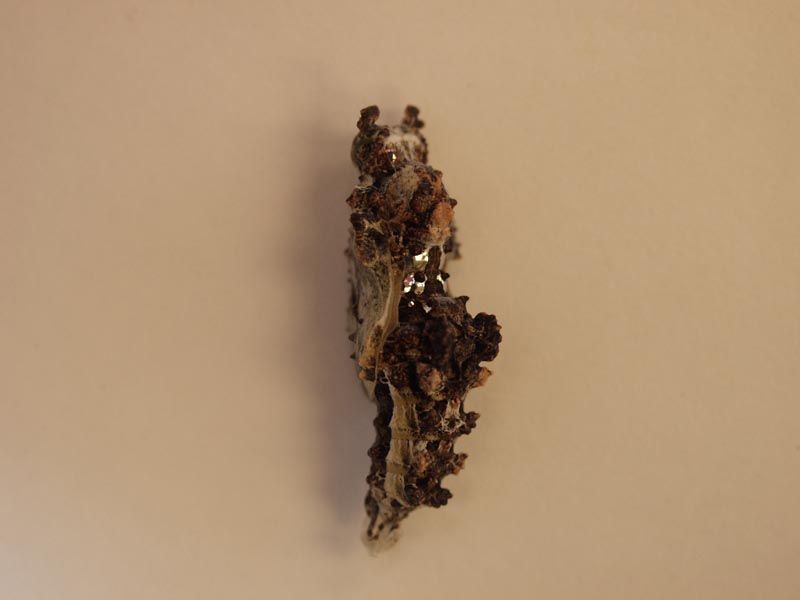


Since the adults spend most of their time in the canopy, they feed on flowers found in that area such as Cordia and Cissus. Adults have also been observed visiting dung on the jungle floor.
The origin of the genus Philaethria is currently unknown. In Greek mythology, Dido was the first Queen of Carthage.
The Scarce Bamboo Page is found in tropical rain forests with most of their time spent in and above the tree canopy.
After mating the female lays her eggs individually on the top of the older leaves of the host plant. Once the eggs hatch the larvae feed on the host plant until they form their pupae, which resemble bird droppings.
In the southern most part of their range, adults of the Scarce Bamboo Page can be found year round, while in the northern regions they are only found July thru December.
The Scarce Bamboo Page and the Longwings (Heliconius) are close relatives. Major differences between these two groups are the shapes of their chrysalides, slight differences in the way the adults look, and the way the females lay their eggs. Due to these differences, the Scarce Bamboo Page is considered to be the most primitive member of the subfamily Heliconiinae.